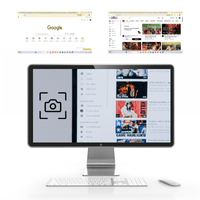
You already know how important employee engagement and motivation are for your business, its productivity, and profitability. A straightforward, interesting, and effective strategy for this is job rotation. When you make employees consistently switch between roles, you not only increase motivation, engagement, and retention rates, but your workers also become more adaptable.
What is Job Rotation?
If you are familiar with shift rotation, then understanding the types of job rotation will be easy for you. For those of you who don’t know, shift rotation is when an employee (s) works between different shifts to ensure continuous work, especially during peak seasons or in industries where you need 24/7 employee availability.
Moreover, when rotating jobs, employees consistently switch between job roles within a fixed time period. In short, employees jump between positions for cross-functional working, coordination, cooperation, training, and development purposes. Here are a few job rotation examples.
- A nurse switching back and forth between the maternity and the geriatric wards, exposing them to various experiences and problems, caring for varied patient groups.
- Transferring a marketing employee temporarily to sales for a short time to help them understand customer requirements and learn sales processes.
- When you are kind enough to transfer workers in manufacturing between positions to relieve them of physical stress, it is also a job rotation example.
Read Also: Top 10 Best Gantt Chart Software for 2025
Why You Need Job Rotation
As we mentioned before, job rotation in HRM increases employee engagement and motivation. However, there are also other reasons why you need this strategy.
- Decreases Job Monotony: Rotating between positions decreases to the point of eliminating boredom. Since the employee is doing various kinds of work, their brain remains actively engaged.
- Streamlines Succession Planning: Any job role can be vacant at any time due to termination, resignation, or retirement. To fill these gaps, you won’t have to look elsewhere.
- Enhances Job Fit: By rotating roles, you ensure that to find the right fit for the skills of your employees, leading to maximizing productivity. It’s kind of like a trial-and-error method.
- Increases Employee Exposure: Switching between various positions exposes your workers to different designations, opportunities, and workflows, increasing their market demand.
- Evaluates & Develops Skills: By switching between various designations, it becomes easy to evaluate your employees’ skills and identify where they are a better fit. For example, maybe an employee is better at testing. However, by mistake, you may have put them in no-code designing. Job rotation helps you rectify your mistakes and boost employee efficiency. The right employee monitoring software will assist you in identifying such issues.
- Widens Experience: Rotating between different job positions also broadens the experience of the employees in different fields. This helps during worker shortages, as you can have one employee work many roles.
Job Rotation Advantages & Disadvantages
Like everything else, job rotation advantages and disadvantages are also common. So, we compiled the ones we experienced in our organization.
1. Pros
These are the 5 key benefits of job rotation you need to know about.
- Better Skill Development: You are familiar with the rule that you need to develop and widen your skills to be more sustainable in the new, advanced work world. Switching between roles helps you do just that.
- Lower Recruitment Expenses: Since you will have employees ready to fill in vacant positions, it will cut down the recruitment costs, as you won’t have to frequently look for and hire new candidates.
- Decreased resignation: When employees’ minds stay active, more engaged, and motivated, the resignation rates decline due to more employee participation and less work boredom. This further reduces costs.
- Increased Flexibility: This strategy of having a single employee rotate between roles for a change makes them more adaptable. So, even when they want to switch designation permanently, they won’t have any issues.
2. Cons
However, you also need to watch out for these cons before implementing this strategy.
- Expensive: It sure decreases recruitment costs. However, proper job rotation requires adequate training, which requires resources and is costly.
- Dissatisfied Employees: Some employees prefer monotonous jobs because they have clear goals and don’t want to make their lives too hectic. Role rotation will not satisfy such workers, and they will eventually resign.
- Resistance & Discomfort: Frequently changing roles also results in resistance and discomfort. It’s not suitable for employees because of the confusion and hectic work. For managers, it breaks the workflow.
- Performance Fluctuations: When an employee is working too many roles, their performance will fluctuate. They might get better in a different position. However, the efficiency in their primary role will be compromised.
- Might Reduce Project Sustainability: For example, when an employee working on a particular project suddenly jumps to a new role, it will break the teamwork and will reduce productivity, which might reduce project sustainability. To ensure that it doesn’t happen, we recommend using the best project management software to track tasks, time, and productivity in real-time and prevent delays.
11 Types of Job Rotation

To be straightforward with you, there is no one-size-fits-all in this strategy. Generally, there are 11 types of job rotation. However, you know better.
1. Horizontal
Employees jump between various roles and positions. However, the hierarchical level or department remains unchanged. This broadens their skills and experience within a functional area.
2. Vertical
As the name suggests, employees go up and down a vertical line (hierarchical levels), switching roles, helping them understand different responsibilities. It is great for developing leadership skills and increasing the chances of getting promoted to senior-level positions.
3. Lateral
This is the type of job rotation where workers jump between different departments. This helps boost cross-functional proficiency. Plus, it also provides a broader perspective on how your organization and business operate.
4. Geographical
Another word for this is job transfer, which is more commonly used in government jobs. Here, what you do is send your particular employee (s) to different locations to provide them with a better idea of how your business runs hyper-locally, as it exposes them to a broader market and operational atmosphere.
5. Task
This is where you will need time tracking software to identify how much time each task will take. Task rotation keeps the employees’ minds active by consistently switching the employees’ tasks within their own job and during the same workday.
6. Time-Based
This is where employees spend a specific time on a particular role before switching to the next. This ensures that employees have enough time to properly master new skills. For example, a month of sales calling before switching to content writing.
7. Project-Based
As the name suggests, employees get to work on various kinds of diverse projects throughout the organization. This exponentially broadens experience and ensures that workers coordinate with diverse teams and departments.
8. Cross-Training
As the name suggests, this is where you step up the employee training game by having them master new skills beyond their niche. This helps during busy periods to cover up HR availability shortages.
9. Special Assignment
This is where you provide your employees with the opportunity to work on specific tasks or projects for a limited time. If they grab it, exposure to challenges and chances outside their regular duties.
10. Leadership Development
This type of job rotation is ideal for leadership roles. This helps managers develop skills outside their niche as they work with employees from various departments and teams.
11. Hybrid
This is where you combine two or more work rotation categories. For example, you can combine horizontal and geographical rotation if you want your employees to rotate between locations and also job roles. However, come to think of it, hybrid job rotation is the costliest.
The Various Training Methods in Job Rotation
As we mentioned before, you also need to train your employees for successful work rotations. Need ideas for the same? Here are the most effective training methods for you.
- On the Job: This is where you train your employees while they are doing their jobs.
- Mentorship: This is where you also act like a coach while training your workers.
- Formal Classroom: This combines theoretical in a formal classroom setting and practical training.
- eLearning Modules: This is where you provide online training resources to employees.
- Case Studies & Simulations: Case studies and simulations further hone the skills of employees as they show how to get the desired results in various situations.
- Job Shadowing: This is the job rotation training method where, while rotating between various jobs, employees also get the opportunity to observe their colleagues to understand their regular duties and difficulties.
- Cross-Functional Workshops: This promotes teamwork and knowledge exchange by organizing interactive cross-departmental workshops.
Implementing the Various Training Methods in Job Rotation
For implementing the various job rotation training methods, you will also need some strategies. Here are the ones that worked for us.
- Make the Schedule All-Inclusive: One of the cons of work rotation is managerial resistance and discomfort. To ensure that this doesn’t happen to you, involve everyone while discussing and implementing the schedule.
- Identify Important Designations: Some designations, such as digital marketing head, can’t be rotated. You need to identify and exclude these positions from the process.
- Communicate the Plan: Rotating the work of employees all of a sudden will cause chaos and confusion. Your workers need to be prepared first.
- Make Training Procedures: As we mentioned before, employees need training for successful work rotation. You need to plan how you will do it. Otherwise, for example, you might run out of resources when they are most necessary.
- Assign Trainers & Mentors: The next step is to assign who will train whom. Your training schedule must also align with their availability.
- Make a Calendar for Training: Another thing to remember is that you can’t train your employees every day. There are peak hours and busy months, too. So, you need to mark specific ideal days for training to ensure that the workflow is not compromised.
Read Also: Top 10 Best Workforce Planning Software for 2025
Implementation Tips for Job Rotation
Now that you have implemented the training methods for it, it’s time to implement job rotation in your organization. Here are 5 tips that worked for us.
1. Set Transparent Time Bracket & Goals
The smart way is to always make the objectives and time frames transparent. Overall, everyone must have a proper idea of what’s happening and why.
2. Prepare & Train
The next idea is to also prepare and train your employees for the change. You can’t expect someone working in content writing for a year to switch to sales calling all of a sudden and then back to their previous role as per your requirements.
3. Plan & Document Processes
This is the technical part that plays an important role in auditing and conflict resolution. Otherwise, your employees can sue you for having them work on a project they were clueless about and wasting their time.
4. Perfectly Time It
Remember to always rotate jobs when it is possible to do it without losing much. For example, it is best to rotate jobs during HR shortages and non-busy hours.
5. Align with Career Paths
A good way to ensure that your employees are satisfied with their new roles is to rotate them to designations about which they are passionate.
DeskTrack: the Most Flexible Real-Time Workforce Management Software
DeskTrack has employee monitoring, project management, and time tracking features that adapt to any workflow, organization, and system infrastructure. Manage your workforce and their projects with the most powerful real-time work tracking software, with intuitive functionality that provides you with useful insights about outcomes and the reasons behind the quality of work, which you can improve with its screenshot monitoring feature. Don’t track tasks. Monitor results with DeskTrack. Try now and realize why this workforce management tool is the preferred choice across 100+ nations.
Frequently Asked Questions (FAQ)
Q. What is the Job Rotation?
Ans. When rotating jobs, employees consistently switch between job roles within a fixed time period. In short, employees jump between positions for cross-functional working, coordination, cooperation, training, and development purposes.
Q. What are the Types of Job Rotation?
Ans. Generally, there are 11 types of job rotation.
- Horizontal
- Vertical
- Lateral
- Geographical
- Task
- Time-Based
- Project-Based
- Cross-Training
- Special Assignment
- Leadership Development
- Hybrid
Q. Is Job Rotation Good or Bad?
Ans. There are a few limitations and benefits of job rotation, including:
Pros:
- Better Skill Development
- Lower Recruitment Expenses
- Decreased resignation
- Increased Flexibility
Cons:
- Expensive
- Dissatisfied Employees
- Resistance & Discomfort
- Performance Fluctuations
- Might Reduce Project Sustainability
Q. What is an Example of Job Rotation?
Ans. Here are a few work rotation examples.
- A nurse switching back and forth between the maternity and the geriatric wards, exposing them to various experiences and problems, caring for varied patient groups.
- Transferring a marketing employee temporarily to sales for a short time to help them understand customer requirements and learn sales processes.
- When you are kind enough to transfer workers in manufacturing between positions to relieve them of physical stress, it is also a job rotation example.
Q. How to Implement Job Rotation?
Ans. You will need these steps.
- Set Transparent Time Bracket & Goals
- Prepare & Train
- Plan & Document Processes
- Perfectly Time It
- Align with Career Paths









